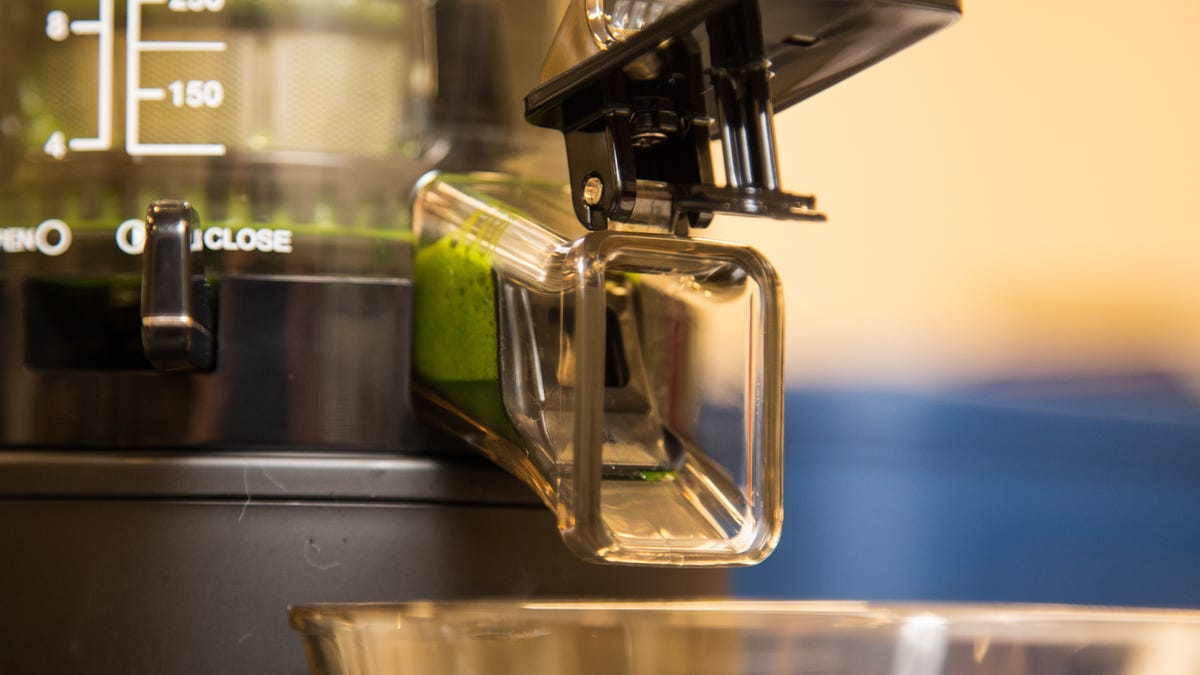 Why You Can Trust CNET
Why You Can Trust CNET What's the difference between juicing and blending?
Juicing and blending both make your daily veggies easier to consume, but what's the difference? Appliance Science takes a look at the differences between these two methods of processing food.

Most of us probably need to eat more veggies. That's the cornerstone of many a diet plan, because veggies offer plenty of nutrients. But they aren't all that...exciting. Which is why many people try juicing or blending, processing the veggies to get the good stuff out. So, what's the difference between these two techniques? Let's take a look at the science of blending and juicing.
Blending is all about breaking the veggies down into smaller parts. Using a blender, you reduce the food to chunks, usually by repeatedly cutting it with a rotating blade. As this blade rotates, it chops the food into smaller and smaller parts, eventually reducing it to a fine paste of parts so small you can't see them. This process is usually lubricated by the addition of water, ice, yogurt or something similar, which helps keep everything moving in the mix and gives it texture.
Juicing is a different approach that is more about extraction than chopping. In a juicer, the food is first mashed, then the liquid part is extracted, usually by compressing it. This leaves behind the solid part (usually called the pulp) and releases the liquid. Think of a juicer as like an orange squeezer on steroids: by twisting and pressing down the orange, the liquid is released and drains off, while the solid is left behind. The same thing happens in a juicer, just much more efficiently.
What difference does this make to the food? The process doesn't fundamentally change the chemistry of the food: you are not cooking or heating the food to release nutrients. Instead, it is about what is removed, because juicing removes most of the solid part.
Think about what is inside a veggie. You have the plant cells, filled with liquid and all of the things that make the cell alive. Around this, you have the cell wall, a tough skin that keeps all of the liquid in. And between the cells you have connective material, the various parts that hold the cells together to form the plant.The stuff inside the cells is full of nutrients, while the stuff on the outside is made of tough fibrous materials. The cells form the different parts of the plant, such as the bits that move water around (the xylem) and the bits that move nutrients around (the phloem). Whatever they do, the nutrients are on the inside in a liquid and the insoluble bulky stuff is on the outside of the cells.
Juicing exploits this. By separating the liquid from the solid, you get just the good stuff and none of the bulk. When you drink this, it is absorbed quicker, because your stomach doesn't have to do any work to get it out of the cells: it is already right there. This, the advocates of juicing say, makes it better because you get all of the nutrient benefits immediately without making your digestive system do the work. It just gets absorbed right away, producing a rush of nutrients into your system.
The problem with this is that it isn't the way that your digestive system evolved. Your gut evolved to do this extraction process, to extract the nutrients over time and to use the bulky fiber of the plant to keep things moving. Digestion is a complex process that requires this, and your gut contains billions of bacteria that help break down some of this for you to use. To grossly simplify it, no fiber means nothing for them to do, which isn't good. If you are interested in the strange and fascinating world of the bugs in your gut, I strongly recommend that you read "I contain multitudes: The microbes within us and a grander view of life" by Ed Yong. This book explains the latest research that shows how these bugs play a fundamental part in not just your digestion, but your overall health. Given this, does it make sense to remove part of the food that our guts evolved to eat?
Overall, juicing and blending are rather like cookies: nice occasionally, but you shouldn't eat them all the time. There is no doubt that a juiced drink can give you a nutritional boost, and that a blend is a good way to make veggies taste better. But our bodies evolved to eat the real thing, and that's the best approach: eat more fresh veggies and less junk.



